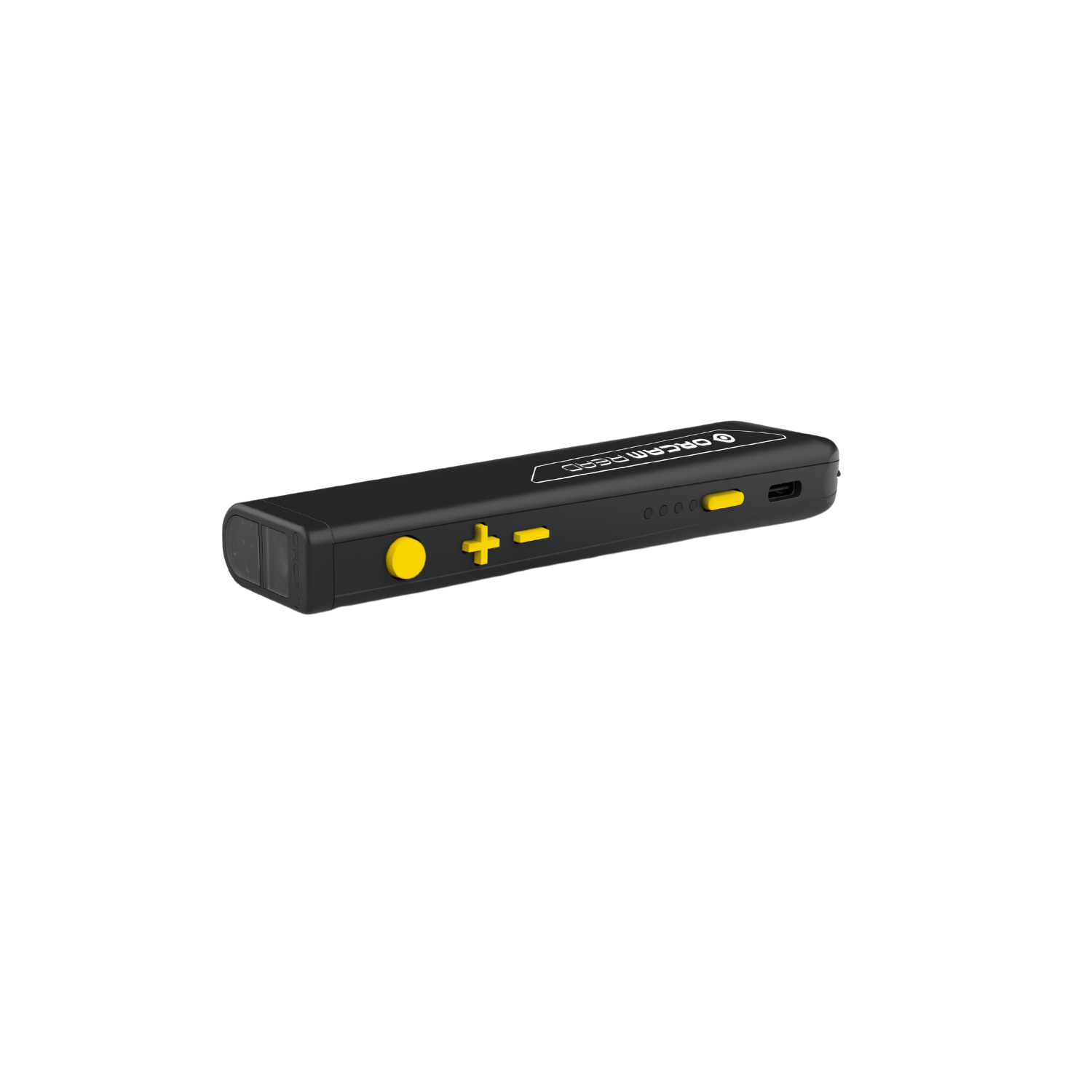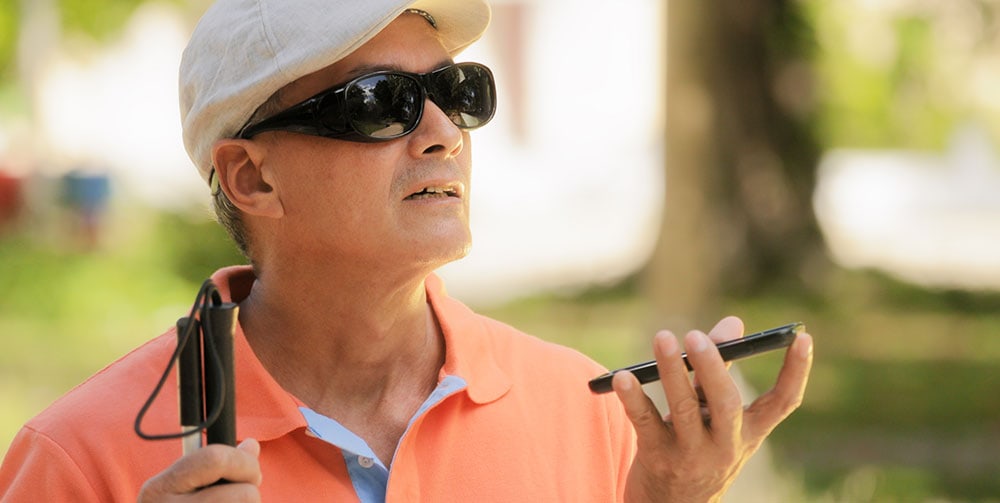OCR Devices for the Blind: Transforming Text into Speech with Ease
Discover Innovative Tools Made for the Visually Damaged
The development of ingenious devices for the aesthetically damaged stands for a significant development in accessibility and freedom. Technologies such as wise glasses with AI capacities and mobile applications created to provide auditory descriptions are improving everyday experiences for customers. In addition, wearable tools that utilize haptic responses boost environmental understanding, while modern Braille innovations use new ways to involve with message. As these tools remain to progress, their effect on the lives of those with aesthetic disabilities increases essential inquiries concerning the future of inclusivity and freedom in different facets of life. What exists ahead in this technological landscape?
Smart Glasses for Navigation

Smart glasses created for navigation are changing the means visually damaged people connect with their environment. These sophisticated devices make use of a mix of electronic camera innovation, artificial intelligence, and auditory feedback to offer real-time details concerning surroundings. By using barrier detection systems, clever glasses can alert customers to prospective risks, allowing safer mobility in both strange and acquainted settings.
The assimilation of GPS technology additionally boosts navigating capacities, permitting customers to obtain acoustic directions as they move. This hands-free strategy not only promotes self-reliance but additionally empowers aesthetically damaged people to browse city landscapes with boosted confidence. Furthermore, several clever glasses are equipped with attributes that recognize landmarks and street signs, providing contextual info that boosts the user experience.
Moreover, the growth of these tools is consistently advancing, with business functioning to enhance the accuracy of item recognition and broaden the series of navigational attributes. As smart glasses end up being extra easily accessible and cost effective, they hold the prospective to dramatically transform everyday life for visually impaired users. Eventually, these ingenious devices represent a critical step towards inclusivity, offering enhanced movement and a greater feeling of autonomy for people navigating the world around them.

Mobile Application for Daily Living
How can mobile applications improve the every day lives of aesthetically damaged individuals? Mobile applications are revolutionizing the means aesthetically damaged customers navigate their atmospheres, handle everyday tasks, and gain access to information. These applications supply essential assistance via various capabilities, promoting independence and boosting lifestyle.
Numerous ingenious mobile applications are designed specifically for day-to-day living. Apps like Be My Eyes connect aesthetically impaired individuals with sighted volunteers through video phone calls, enabling them to get real-time support with tasks such as checking out labels or navigating unknown areas. Likewise, Seeing AI, created by Microsoft, utilizes fabricated knowledge to describe environments, checked out text, and recognize objects, efficiently transforming a mobile phone into a powerful tool for daily assistance.
In addition, navigating applications tailored for the visually impaired, such as Aira and BlindSquare, use audio-based directions and ecological info, allowing individuals to traverse their environments securely and confidently. Past navigation and prompt support, mobile applications likewise sustain company and task management, with functions that aid users set suggestions, develop order of business, and track visits. In recap, mobile applications function as essential sources, equipping aesthetically damaged individuals to lead even more independent and satisfying lives.
Wearable Technologies for Aid
Empowerment with modern technology is significantly noticeable in the realm of wearable tools created to aid aesthetically damaged individuals. These cutting-edge tools incorporate seamlessly right into every day life, improving navigating and providing crucial feedback to individuals. For instance, smart glasses equipped with cams can check out and identify faces text out loud, enabling customers to interact more with confidence in expert and social settings.
One more remarkable advancement is the usage of haptic feedback systems in wearable gadgets. These systems use resonances or various other responsive signals to convey information regarding the individual's atmosphere, such as barriers or modifications in terrain, boosting flexibility and safety and security. Wearable innovations additionally include wristbands that attach to get more smart devices, informing individuals to alerts through subtle vibrations, thus boosting connectivity without reliance on aesthetic signs.
As these innovations remain to develop, they are not just improving independence for visually impaired people but likewise cultivating a higher sense of addition in society. By bridging the gap in between difficulties faced in everyday living and the possibility for autonomy, wearable innovations act as essential devices in the pursuit for equality and empowerment for those with visual impairments.
Sound Summary Devices
Sound summary devices play an important role in enhancing accessibility for visually damaged people, offering them with the capability to involve with aesthetic media. AI-powered visual aids. These tools supply narrated summaries of vital visual aspects in films, television shows, and live performances, ensuring that users can fully understand the context and emotions conveyed with visuals
Sound description can be incorporated into numerous platforms, including streaming services, cinema screenings, and live movie theater. Lots of popular streaming services now include audio summary as an ease of access function, permitting customers to select it easily. In addition to conventional media, specialized applications also exist, supplying audio descriptions for art events, museums, and other cultural occasions.
The performance of audio summary hinges on the skill of the narrators, that should convey visual details succinctly without diminishing the initial sound. Technologies in this area are additionally paving the means for more personalized experiences, where users can adjust the level of information and pacing according to their preferences.
Braille Innovations and Instruments
Braille tools and developments have substantially changed the way aesthetically impaired individuals engage with message and information. Modern developments have actually led to the advancement of flexible tools that improve proficiency and independence among customers.
Additionally, portable Braille notetakers combine traditional Braille input with contemporary capabilities, promoting note-taking, scheduling, and paper editing on the go. Smart glasses for the visually impaired. These compact devices often feature text-to-speech abilities, bridging the gap between Braille and acoustic details
Additionally, cutting-edge Braille printers have arised, allowing individuals to produce Braille tags, papers, and educational products successfully. This availability promotes greater involvement in specialist and instructional atmospheres, ultimately advertising inclusivity.
Furthermore, research into wise Braille technologies proceeds to increase. Gadgets that integrate expert system are being checked out to give real-time navigating support and contextual details, enhancing the customer experience in varied settings. Overall, these developments show a commitment to equipping visually damaged people with technology, guaranteeing they can easily gain access to and engage with the world around them.

Conclusion
The advancement of innovative tools for the visually damaged considerably enhances self-reliance and quality of life. These modern technologies not just foster greater addition however also promote freedom in daily tasks, ultimately contributing to a more available and equitable society for aesthetically impaired individuals.
As wise glasses become more obtainable and inexpensive, they hold the possible to significantly transform day-to-day life for aesthetically impaired customers. Mobile apps are changing the way visually impaired customers browse their settings, manage day-to-day jobs, and access details. Applications like Be My Eyes attach visually damaged customers with sighted volunteers via video phone calls, permitting them to receive real-time help with tasks such as checking out tags or navigating unknown areas.In addition, navigating apps customized for eye exam and contacts near me the visually impaired, such as Aira more and BlindSquare, provide audio-based directions and ecological information, enabling users to traverse their environments securely and confidently.The advancement of innovative devices for the aesthetically damaged dramatically boosts independence and high quality of life.